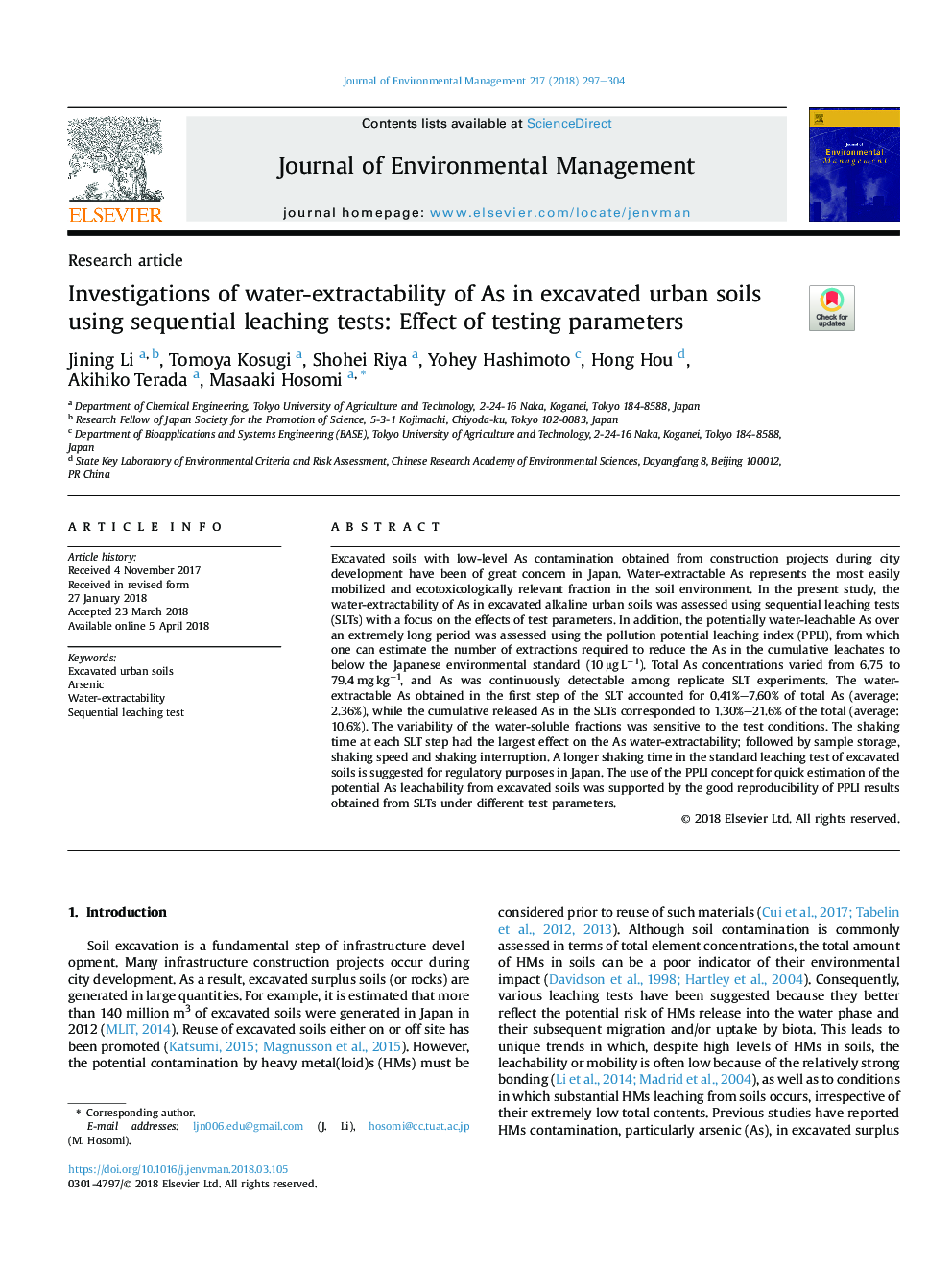| Article ID | Journal | Published Year | Pages | File Type |
|---|---|---|---|---|
| 7477237 | Journal of Environmental Management | 2018 | 8 Pages |
Abstract
Excavated soils with low-level As contamination obtained from construction projects during city development have been of great concern in Japan. Water-extractable As represents the most easily mobilized and ecotoxicologically relevant fraction in the soil environment. In the present study, the water-extractability of As in excavated alkaline urban soils was assessed using sequential leaching tests (SLTs) with a focus on the effects of test parameters. In addition, the potentially water-leachable As over an extremely long period was assessed using the pollution potential leaching index (PPLI), from which one can estimate the number of extractions required to reduce the As in the cumulative leachates to below the Japanese environmental standard (10â¯Î¼gâ¯Lâ1). Total As concentrations varied from 6.75 to 79.4â¯mgâ¯kgâ1, and As was continuously detectable among replicate SLT experiments. The water-extractable As obtained in the first step of the SLT accounted for 0.41%-7.60% of total As (average: 2.36%), while the cumulative released As in the SLTs corresponded to 1.30%-21.6% of the total (average: 10.6%). The variability of the water-soluble fractions was sensitive to the test conditions. The shaking time at each SLT step had the largest effect on the As water-extractability; followed by sample storage, shaking speed and shaking interruption. A longer shaking time in the standard leaching test of excavated soils is suggested for regulatory purposes in Japan. The use of the PPLI concept for quick estimation of the potential As leachability from excavated soils was supported by the good reproducibility of PPLI results obtained from SLTs under different test parameters.
Keywords
Related Topics
Physical Sciences and Engineering
Energy
Renewable Energy, Sustainability and the Environment
Authors
Jining Li, Tomoya Kosugi, Shohei Riya, Yohey Hashimoto, Hong Hou, Akihiko Terada, Masaaki Hosomi,
